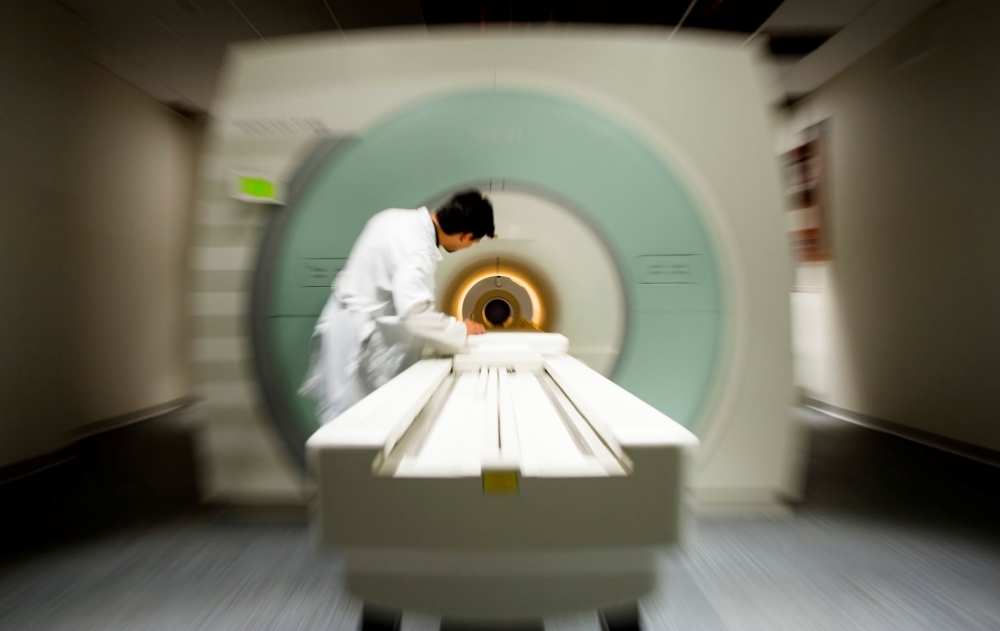

Techniques developed by researchers at the University of São Paulo with FAPESP’s support are helping to enhance the safety of health workers and enable scientists to understand more about the biology of the disease (photo: Léo Ramos Chaves / Pesquisa FAPESP)
Techniques developed by researchers at the University of São Paulo with FAPESP’s support are helping to enhance the safety of health workers and enable scientists to understand more about the biology of the disease.
Techniques developed by researchers at the University of São Paulo with FAPESP’s support are helping to enhance the safety of health workers and enable scientists to understand more about the biology of the disease.

Techniques developed by researchers at the University of São Paulo with FAPESP’s support are helping to enhance the safety of health workers and enable scientists to understand more about the biology of the disease (photo: Léo Ramos Chaves / Pesquisa FAPESP)
By Elton Alisson | Agência FAPESP – A number of minimally invasive autopsy techniques developed over the last six years by researchers at the University of São Paulo’s Medical School (FM-USP) in Brazil are being used to confirm deaths due to the novel coronavirus, SARS-CoV-2, in the state of São Paulo. The main aim is to enhance the safety of health workers by reducing contact with cadavers.
The techniques are based on diagnosis by imaging and percutaneous intervention, which entails puncturing the skin to gain access to internal organs and tissue.
“This novel coronavirus sticks to clothes and skin, so we have to take precautions and preventive measures, mainly to protect the health workers who come into contact with patients. That includes the professionals who perform autopsies. These techniques will help protect them,” Paulo Saldiva, a professor at FM-USP and principal investigator for the project supported by FAPESP, told Agência FAPESP.
Procedures performed to confirm that SARS-CoV-2 was the cause of death cannot be performed in conventional autopsy rooms because the pathogen is highly contagious, Saldiva explained.
“There aren’t any autopsy rooms in Brazil with the biosafety level required for this, and we don’t have the time to build and equip the necessary facilities,” he said.
According to Saldiva, autopsies to confirm deaths due to COVID-19 must be performed in hospitals. “The protocol implemented at Hospital das Clínicas [FM-USP’s teaching hospital], for example, requires the use of minimally invasive techniques for cause of death confirmation in the hospital where patients with suspected COVID-19 have died,” he said.
The rules followed at Hospital das Clínicas comply with a recommendation by the São Paulo State Department of Health, announced during a press conference on March 17 and applicable to patients with suspected COVID-19 in public and private hospitals throughout the state. On that day, the first death due to the disease in São Paulo City was confirmed, and four other deaths possibly related to COVID-19 were being investigated.
Confirmation requires diagnostic testing by the hospital concerned, which was a private facility in all five cases, explained Paulo Rossi Menezes, a professor at FM-USP and head of the Health Department’s Center for Disease Control.
“Tissue samples have been taken from these four patients, and we’re waiting for the test results. The bodies of people whose deaths were caused by COVID-19 will not be sent to the Death Certification Service [SVO, the state’s autopsy system],” Rossi said.
One week later, as of March 24, the number of confirmed deaths by COVID-19 in the state of São Paulo had risen to 40.
Progress in understanding the disease
According to Saldiva, tissue samples taken by these minimally invasive autopsy techniques from patients whose deaths are caused by COVID-19 in São Paulo can be used to glean more biological knowledge of the disease.
“We plan to create a biorepository of tissue samples for use by researchers who want to understand the mechanisms of the infection and help improve its diagnosis,” he said.
The same minimally invasive techniques were used in more than 60 autopsies performed by the researchers to investigate deaths from yellow fever in São Paulo in 2018.
“We have the world’s largest autopsy database on patients who died from yellow fever in an urban area,” Saldiva said.
During the 2018 yellow fever outbreak in São Paulo, the researchers also validated the use of the techniques for the purposes of epidemiological surveillance. With a tablet-sized portable ultrasound device used by the US Army on the battlefield and acquired by the researchers with funding from FAPESP, they went to places where deaths attributed to yellow fever had occurred to obtain images of the dead person’s organs and collect tissue samples for laboratory confirmation of the diagnosis before removal of the body.
“The use of these techniques in cases involving highly contagious diseases like COVID-19 enables us to obtain research material without putting health workers at risk,” Saldiva said. “It also enables us to avoid having to invest in a high biosafety autopsy facility.”
Republish
The Agency FAPESP licenses news via Creative Commons (CC-BY-NC-ND) so that they can be republished free of charge and in a simple way by other digital or printed vehicles. Agência FAPESP must be credited as the source of the content being republished and the name of the reporter (if any) must be attributed. Using the HMTL button below allows compliance with these rules, detailed in Digital Republishing Policy FAPESP.





